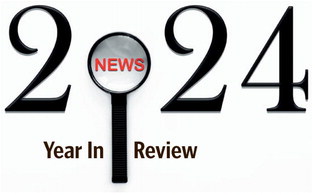Preparing Students For World Of Finance


For more than a decade, high school students in the eastern Hi-Line town of Saco have had to immerse themselves in lessons on debt management, budgeting and financial investing on their path to a diploma. What began as an elective course quickly morphed into a two-semester requirement for graduation, one that Saco Public Schools Superintendent Tanya Funk described as a perennial hit among students and parents alike.
“Some students are lucky enough to come from a home where the parents take time to talk to their kids about these things and teach them, but a lot of our kids don’t come from homes like that anymore,” said Funk, who taught the course herself for years prior to becoming superintendent. “So the burden has kind of shifted to the school to create responsible consumers and to create students who can go out and be productive members of society and not get themselves so deep into debt that they can never get out.”
The district’s experience teaching financial literacy offers a glimpse into the near future for public schools across Montana. Last year, Montana’s Board of Public Education approved a series of regulatory changes that includes two new statewide graduation requirements: a half-credit of civics and a half-credit of financial education or economics, both slated to go into effect next July. The move was strongly promoted by Superintendent Elsie Arntzen during her agency’s broader review of school accreditation rules, and applauded during the 2023 legislative session by lawmakers, who passed a bipartisan measure supporting financial literacy instruction.
The new civics requirement will prove a much easier lift for districts, according to numerous local and state education leaders who told Montana Free Press that existing government and social studies courses largely align with the standards set by the state. Instructing students about checking accounts, student loans, personal investing and other financial topics is a slightly different animal, and while the requirement won’t apply until the class of 2026 approaches graduation, districts large and small have already taken steps to prepare.
For Missoula County Public Schools, that conversation began in fall 2023 as the district worked to map a series of pathways for its students. Assistant Superintendent Amy Shattuck said the state education board granted local administrators considerable flexibility in meeting the requirement, allowing financial literacy to be delivered through existing courses on math, family and consumer sciences, business, or career and technical education. MCPS recognized the need to get on top of the change quickly, she added, as juniors and seniors are often already balancing packed class loads.
“Our students, when they come in freshman year, what we like to do is try and create a template of their four-year plan,” Shattuck said. “Since this came, for this 2026 cohort, in the middle of their career at high school, we had to make sure that we planned ahead and counselors knew ahead so that they can squeeze those into their schedules.”
Shattuck added the new requirement will not require the hiring of any additional teaching staff in the district’s four high schools.
One of the ways MCPS plans to make financial literacy education available is through the use of online courses from outside venues including the Montana Digital Academy, a state-run online program established by the 2009 Legislature to offer digital instruction and resources for Montana schools. Executive Director Jason Neiffer said the academy has talked to leaders in a dozen or so districts about the change over the past six months, and is crafting a wider messaging strategy for the coming 202425 school year to inform other schools of its offerings.
“We have no specific district that is opted into this yet,” Neiffer added, “but because it’s still a little while before that’s required, we anticipate that we will have some districts that work with us to provide that traditional distance learning instructional model.” In addition to virtual classes led by a qualified teacher, Neiffer noted that the academy also offers digital content and instructional materials through its online clearinghouse, which the Montana Legislature voted to expand last year. According to Neiffer, those resources can help districts craft and adopt their own financial literacy curricula for use by local teachers or adapt existing courses to meet the state’s financial literacy standards.
A similar situation is unfolding in eastern Montana, where Miles Community College has expanded a dual-credit instructional partnership with 31 school districts — dubbed “Opportunity Realized” — to include a business and personal finance course. President Ron Slinger, who also sits on the Board of Public Education, told MTFP this week that the expansion is designed to meet state financial literacy standards and will be offered by the college campus at no charge to participating districts or their students.
“We know that our school district partners have limited resources to meet these new requirements,” Slinger said. “The MCC Opportunity Realized Program enables our college to be an active partner in helping them meet these new requirements, while at the same time providing tremendous opportunities to their students.”
Montana isn’t the only state placing increasing importance on financial literacy among high schoolers. Carly Urban, an economics professor and researcher at Montana State University, said the change in statewide graduation requirements mirrors a national trend over the past five years. Twenty-three states have now passed laws requiring a full semester of personal finance for high school graduation, and as many as 35 have embedded such instruction elsewhere in their regulations governing public education. Much of the legislation on the issue is relatively recent, Urban noted, meaning the requirements have yet to take full effect.
“The 2024 graduating class, I want to say it was eight states that actually required a full semester, and that gives you kind of a good feel for how much progress there’s been in the last couple of years,” Urban said. “It’s not hit the schools yet, but the class of 2030 we’re going to see a ton.”
Urban has been researching financial literacy in public education and associated state requirements for more than a decade, and said she’s shared her insights with the Office of Public Instruction during its development of resources for schools implementing the new standards. Based on her findings, Urban said, the outcomes of such instruction for students include higher credit scores, better student loan decisions, and a reduced likelihood of getting behind on debt accounts.
“They take out a little bit more in public student loans, but then they use less credit card debt, which is actually a really common way to finance things like your lodging or your food or your textbooks, and has higher interest-rate implications,” Urban said. “So basically better borrowing is what we’re seeing.” Urban added that findings she’s seen from other researchers also indicate a reduction in payday lending among individuals who have had personal financial education in high school. One result she hasn’t noticed, however, is an increase in the amount of money students are investing or saving, leading her to believe the biggest consequence of such classes so far is avoidance of “really bad debt decisions.”
That largely tracks with what Funk has gleaned in the Saco Public Schools, where lessons on student loans and responsible credit card use have been a “big hit” with students. She said she’s also seen the topic of compounding interest generate a lot of student enthusiasm, as they realize the long-term benefits of saving $100 a month. As other districts prepare to embed such lessons in their own required curricula, Funk encouraged them not to “overthink it” and to simply brainstorm a list of topics that will give high school graduates a strong financial foundation regardless of the academic or professional path they choose.
“Whether you’re going into the trades or staying on the farm or ranch or going to college, you need to have a budget and you need to pay rent and you need to buy groceries and you need to have insurance on your vehicle and your house,” Funk said. “The strategies, the curriculum that we cover, applies to all of the kids, no matter where they are going.”



